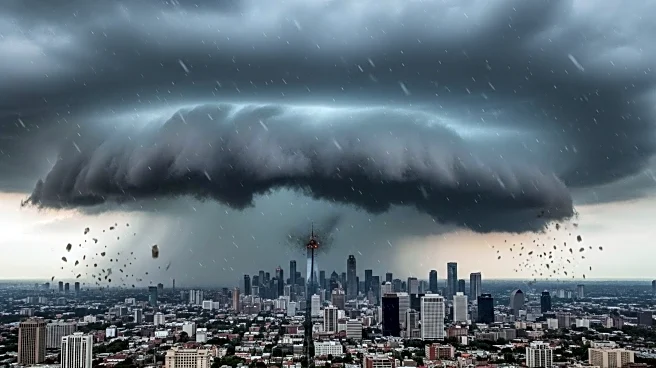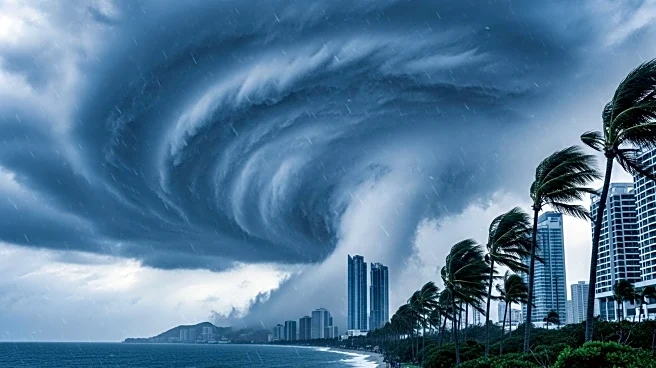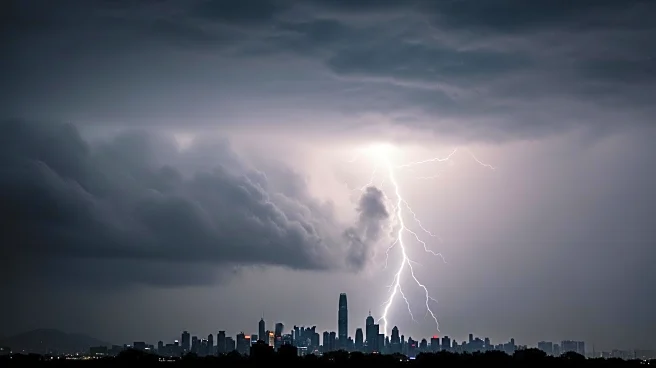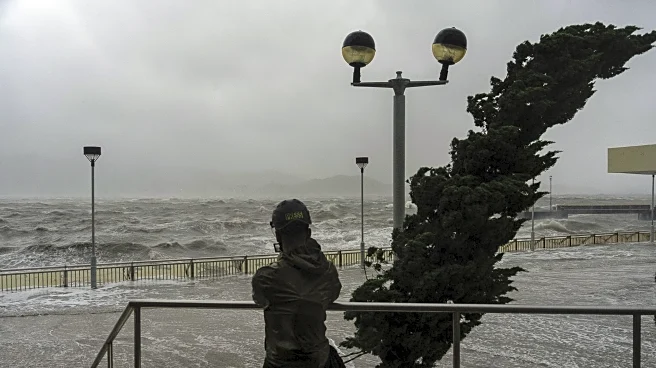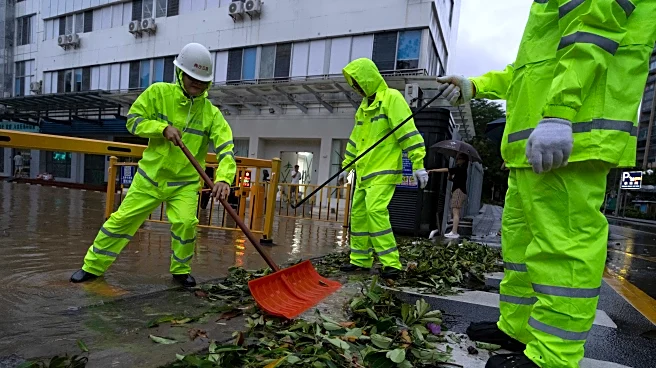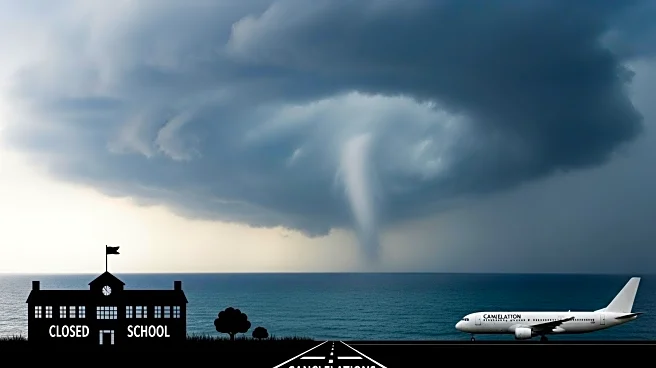What's Happening?
Typhoon Ragasa has caused significant disruption across Hong Kong, southern China, the Philippines, and Taiwan, leading to landslides, flooding, and massive waves. In Taiwan, the collapse of a natural dam resulted in the deaths of at least 14 people, with 31 others missing. The storm's impact underscores the increasing severity and unpredictability of weather events attributed to the human-caused climate crisis. The affected regions are accustomed to typhoons, but the intensity of Ragasa has raised concerns about the future implications of climate change on storm patterns.
Why It's Important?
The devastation caused by Typhoon Ragasa highlights the urgent need for global action on climate change. As storms become more extreme and unpredictable, vulnerable regions face heightened risks, necessitating improved disaster preparedness and response strategies. The event serves as a stark reminder of the real-world consequences of climate change, emphasizing the importance of international cooperation to mitigate its effects and protect communities from future disasters.
What's Next?
Efforts to assess and address the damage caused by Typhoon Ragasa are underway, with rescue operations continuing in affected areas. The event is likely to prompt discussions on enhancing infrastructure resilience and disaster response capabilities in regions prone to severe weather. Additionally, it may influence policy decisions related to climate change adaptation and mitigation strategies.
Beyond the Headlines
The typhoon's impact on multiple countries highlights the interconnected nature of climate-related challenges, underscoring the need for collaborative international efforts to address the climate crisis. It also raises ethical considerations regarding the responsibility of developed nations to support vulnerable regions in adapting to climate change.

